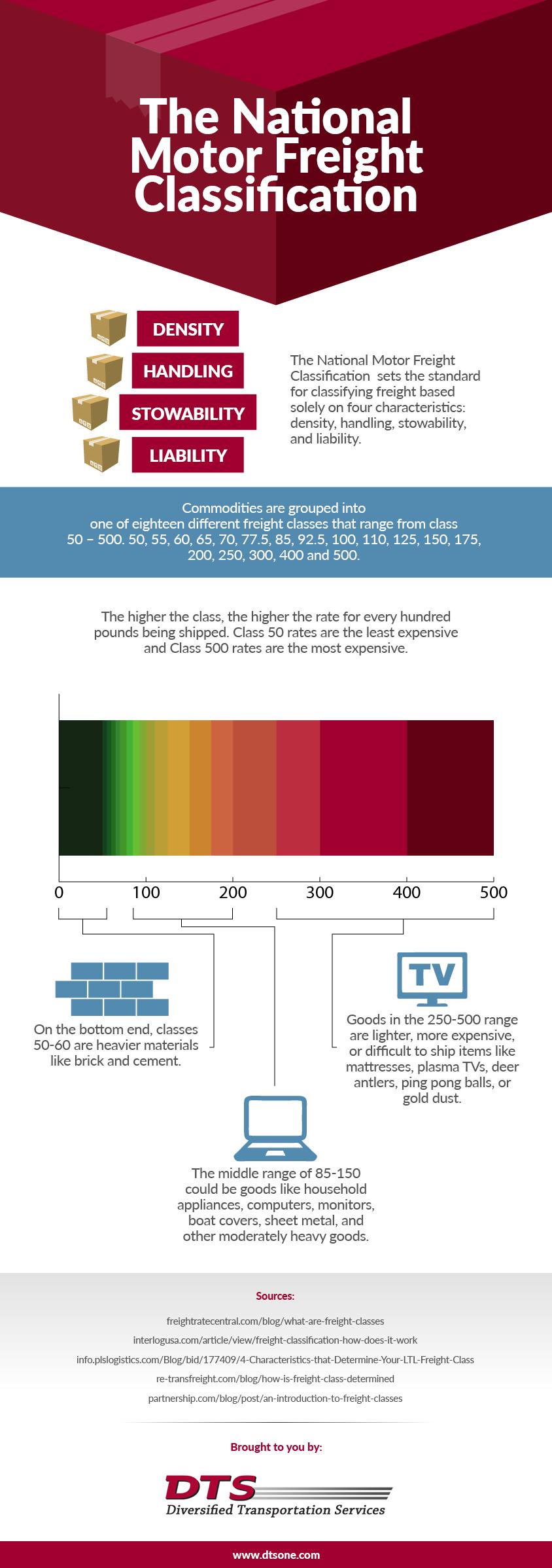Are you ready to take your online store to the next level? If you’re running an e-commerce business, you know that standing out in a crowded marketplace can feel like an uphill battle. With countless competitors vying for attention, simply having a great product isn’t enough. That’s where e-commerce SEO comes into play! By optimizing your online store, you can boost visibility, attract more visitors, and ultimately drive sales. But where do you start? Fear not! We’ve put together a comprehensive Ecommerce SEO Checklist featuring 16 essential optimizations that will transform your store into a search engine magnet. Whether you’re a seasoned pro or just dipping your toes into the world of digital marketing,these actionable tips will help you climb the search rankings and reach your business goals. Let’s dive in and get your e-commerce site thriving!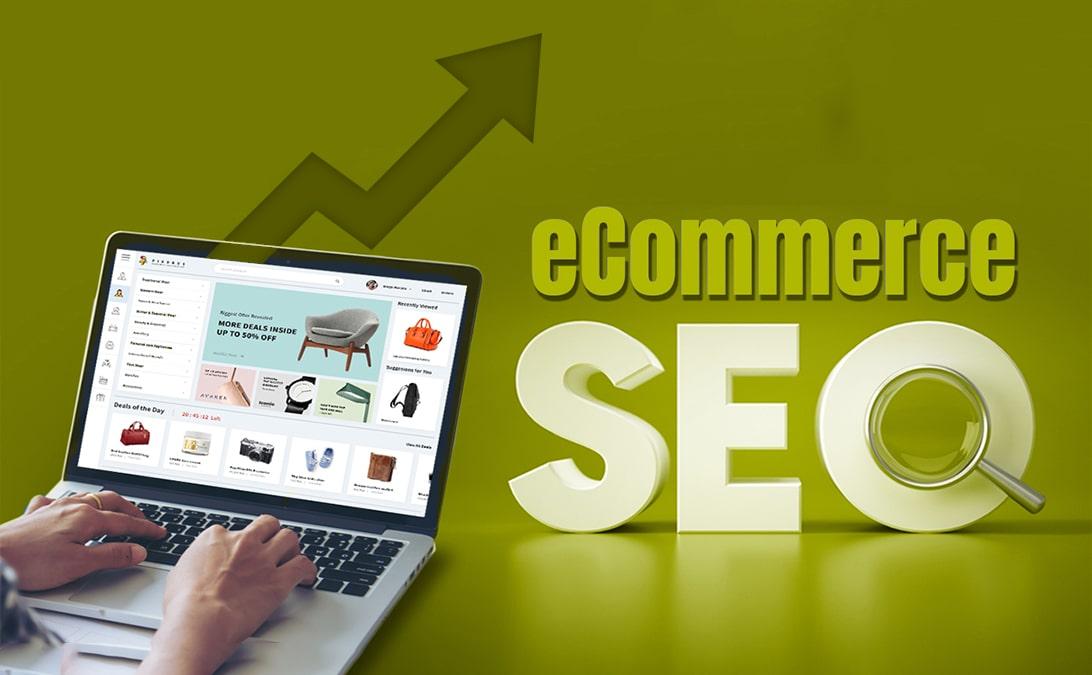
Understanding the Importance of Ecommerce SEO for Your Online Store
In the ever-evolving landscape of online retail, Ecommerce SEO is not just a luxury—it’s a necessity.With countless competitors vying for attention, having a well-optimized online store can be the key to standing out. By focusing on SEO, you not only improve your visibility on search engines but also attract more qualified traffic to your site, ultimately leading to increased sales.
To harness the full potential of your online store, consider the following essential aspects:
- Keyword Research: Identifying the right keywords is essential. Use tools like Google Keyword Planner to find terms that your target audience is searching for, and incorporate these strategically into your product descriptions, meta tags, and URLs.
- On-Page Optimization: Each page should be optimized for specific keywords. Ensure that title tags, headings, and image alt texts are relevant and descriptive.
- Site structure: A clear and intuitive site structure not only enhances user experience but also helps search engines crawl your site more effectively. Use categories and subcategories wisely to organise your products.
- Mobile Optimization: with an increasing number of consumers shopping on their mobile devices, having a mobile-friendly site is crucial for both user experience and search rankings.
Moreover, it’s essential to prioritize technical SEO.This involves ensuring your website loads quickly, is secure (using HTTPS), and has no broken links. Search engines favor sites that provide a seamless user experience, and these technical elements play a significant role in that perception.
Another critically important aspect is creating quality content that resonates with your audience. Consider adding a blog to your store where you can discuss industry trends, product tips, and customer stories. This not only enhances your SEO efforts but also builds trust and authority in your niche.
don’t underestimate the power of link building. Collaborate with influencers and bloggers in your industry. By getting backlinks from reputable sites, you can significantly improve your search engine ranking and drive more organic traffic to your store.
Crafting Keyword-Rich Product Descriptions That Drive traffic
Creating compelling product descriptions is essential for attracting customers and improving your store’s visibility on search engines. A well-crafted description not only highlights the features of your product but also engages potential buyers by appealing to their emotions and addressing their needs.To achieve this, consider the following strategies:
- Understand your Audience: Research who your ideal customers are and what language resonates with them. Tailor your descriptions to speak directly to their interests and pain points.
- Focus on Benefits: Go beyond simply listing features; explain how the product can solve a problem or enhance the customer’s life. Use persuasive language that evokes emotions and creates a desire to purchase.
- Incorporate Keywords Naturally: Identify relevant keywords that your target audience is searching for. Integrate them seamlessly into your product descriptions to improve SEO without compromising readability.
Consider using a clear structure for your descriptions. A simple format might include:
| Section | Description |
|---|---|
| Product Name | Include the main keyword and keep it concise. |
| Features | list key features using bullet points for easy scanning. |
| Benefits | Explain how these features translate into benefits for the customer. |
| Call to Action | Encourage the customer to take action, like “Buy Now” or “Add to Cart.” |
Additionally, utilize storytelling techniques to create a narrative around your products. Share how they are made, their unique qualities, or testimonials from satisfied customers. Personal stories can humanize your brand and make your products more relatable.
Lastly, don’t underestimate the power of formatting. Use bold text for critical features and benefits, employ bullet points for clarity, and include images that complement your descriptions. This combination not only enhances readability but also keeps potential buyers engaged, increasing the likelihood of conversion.
Mastering On-Page SEO Techniques for Maximum Visibility
To truly enhance your online store’s visibility, mastering on-page SEO techniques is essential. every element on your product pages can significantly impact your search engine rankings and user experience. Hear are some key areas to focus on:
- Title Tags: Each product should have a unique, keyword-rich title tag that accurately describes the item.
- Meta Descriptions: Craft compelling meta descriptions that encourage clicks. Ensure they include primary keywords and a call to action.
- Header Tags: Utilize header tags (H1, H2, H3) to structure content hierarchically, making it easier for both users and search engines to navigate.
- Image Optimization: Use high-quality images, and make sure to include alt text that describes the image while incorporating relevant keywords.
- URL Structure: Create clean, descriptive URLs that include keywords and are easy for users to read.
- Internal Linking: Guide customers through your site by linking related products and categories, improving navigation and SEO.
Another crucial aspect of on-page optimization is the content itself. Quality product descriptions not only inform potential buyers but also help search engines understand your page’s relevance. Aim for:
- Unique Descriptions: Avoid using manufacturer-supplied descriptions; write your own to provide unique value.
- Keyword Optimization: Naturally incorporate primary and secondary keywords throughout the text.
- Customer Reviews: Display customer reviews prominently; they add user-generated content and build credibility.
consider implementing a responsive design. A mobile-friendly site is non-negotiable in today’s digital landscape. Not only does it enhance user experience, but it also plays a significant role in your search engine rankings. pay attention to:
- Loading Speeds: Optimize images and use caching plugins to reduce loading times.
- Mobile Usability: Ensure buttons are easily clickable and that text is legible without zooming.
- Testing tools: Regularly use tools like Google’s Mobile-Friendly Test to check your store’s performance.
By implementing these techniques,you can create an online store that not only attracts traffic but also converts visitors into loyal customers. each optimization contributes to a better user experience and ultimately drives your store’s success.
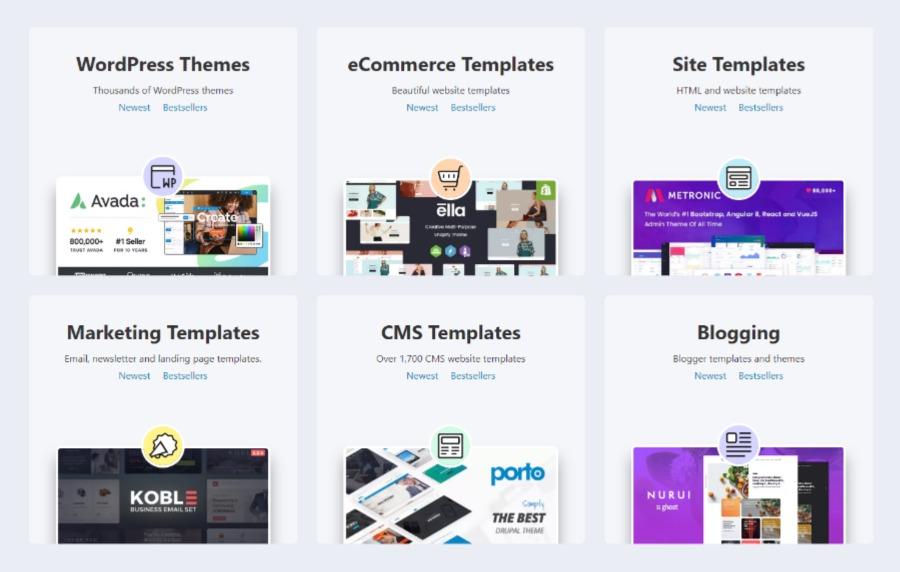
Building a User-Friendly Site structure for Better Navigation
Creating a logical and user-friendly site structure is essential for enhancing navigation and improving the overall user experience on your online store. A well-organized layout not only helps your visitors find what they’re looking for but also boosts your SEO performance.Here are some strategies to consider:
- Hierarchical Navigation: Organize your content in a hierarchical manner, with main categories at the top level and subcategories nested underneath. This allows users to drill down easily and find specific products without feeling overwhelmed.
- Descriptive Menu Labels: Use clear and descriptive labels for your navigation menu. Rather of generic terms, opt for specific phrases that clearly indicate the content customers can expect to find.
- Bread Crumbs: Implement breadcrumb navigation to help users keep track of their location within your site. This feature not only aids navigation but also contributes to a better understanding of your site’s structure.
In addition to organizing content effectively, it’s critically important to focus on the functionality of your navigation. Ensure that your search bar is easily accessible and provides relevant results. Consider the following tips:
- Sticky Navigation: A sticky navigation menu stays visible as users scroll down the page, making it easier for them to navigate without having to scroll back up.
- Mobile Optimization: Ensure that your site structure is optimized for mobile devices. A mobile-friendly design allows for easy navigation on smaller screens, encouraging users to explore more.
- Internal Linking: Strategically place internal links throughout your content to guide users to related products or categories. This not only enhances navigation but also keeps visitors on your site longer.
To summarize,an efficient site structure is a key element in creating a seamless shopping experience. by focusing on hierarchy, clarity, and functionality, you can significantly improve how visitors interact with your online store. Remember, the easier you make it for customers to find what they want, the more likely they are to complete their purchases.
Optimizing Images and Alt Text to Enhance Your SEO Strategy
When it comes to enhancing your online store’s SEO strategy, optimizing images and their accompanying alt text can significantly boost your visibility in search engine results. As consumers are increasingly drawn to visuals in their shopping experience, ensuring your images are optimized not only improves user engagement but also contributes to your SEO performance.
Start by ensuring that your images are high-quality and appropriately sized. Large image files can slow down your website’s loading times, negatively impacting user experience and search rankings. Aim to compress images without sacrificing quality, using tools like ImageOptim or TinyPNG, to strike the perfect balance between visual appeal and performance.
Next, don’t underestimate the power of alt text. Alt text serves as a description for your images, enabling search engines to understand their content. This is crucial not only for SEO but also for accessibility, as screen readers rely on alt text to describe images to users with visual impairments. when crafting alt text, keep these tips in mind:
- Be descriptive and concise, ideally under 125 characters.
- incorporate relevant keywords naturally, but avoid keyword stuffing.
- Use unique alt text for each image to avoid duplicate content issues.
To illustrate the importance of effective image optimization and alt text, consider the following table that compares optimized and non-optimized images:
| Image Type | Loading Time | SEO Impact | User Engagement |
|---|---|---|---|
| Optimized Image | 2 seconds | High | 75% |
| Non-Optimized Image | 8 seconds | Low | 30% |
By taking the time to optimize your images and carefully construct alt text, you’re not just improving your site’s SEO; you’re creating a more enjoyable shopping experience for your customers. With better visibility and increased engagement, these small yet impactful steps can lead to higher conversions and customer satisfaction.
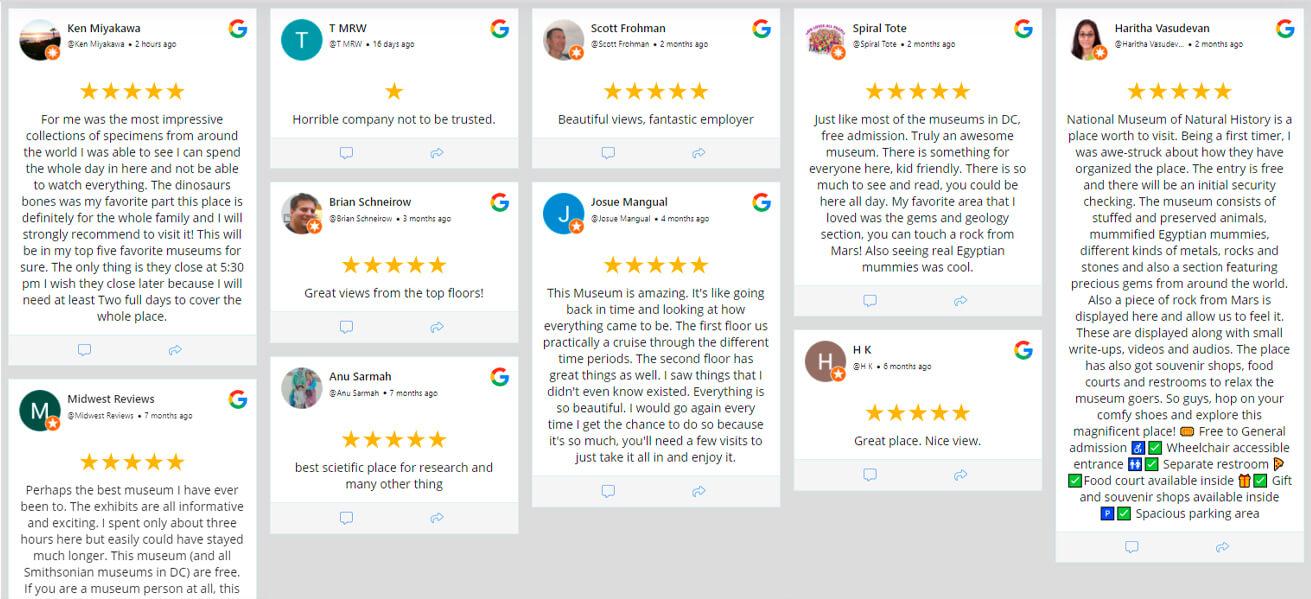
Leveraging Customer Reviews to Boost Trust and Ranking
In the competitive landscape of ecommerce, harnessing the power of customer reviews can be a game-changer for your online store. Reviews not only provide valuable insights for potential buyers but also serve as a trust signal that can significantly enhance your site’s credibility. When shoppers see positive feedback from real customers, they are more likely to convert, thus boosting your sales and overall ranking in search results.
To make the most of customer reviews, consider implementing the following strategies:
- Encourage Feedback: Prompt your customers to leave reviews after they make a purchase. This can be done through follow-up emails or simple prompts on your website.The more reviews you gather, the more social proof you create.
- Showcase Reviews: Display customer reviews prominently on product pages and landing pages. Use star ratings and highlight key testimonials to catch the eye of potential buyers.
- Respond to Reviews: Engage with your customers by responding to their reviews,whether they are positive or negative. This interaction demonstrates that you value their opinions and are committed to customer satisfaction.
Moreover, integrating customer reviews into your SEO strategy can yield considerable benefits.Search engines prioritize sites with user-generated content,as it indicates active engagement and relevancy. By accumulating a diverse array of reviews, you can improve your site’s visibility and ranking. Here’s a swift look at how reviews can influence your SEO:
| Review Type | SEO Benefit |
|---|---|
| Positive Reviews | Enhance trust and credibility, leading to higher conversion rates. |
| Keyword-Rich Reviews | Improve search visibility by incorporating relevant keywords naturally. |
| Fresh Content | Regularly updated reviews signal to search engines that your content is current. |
consider utilizing structured data markup to further optimize your customer reviews. By implementing Schema.org markup,you can help search engines understand the content of your reviews better,wich can lead to rich snippets in search results. These snippets can increase your click-through rates, making your listings stand out even more.
actively managing and leveraging customer reviews is not just a best practice; it’s a crucial element of your ecommerce strategy that can lead to increased trust and improved search rankings. By cultivating a review-friendly environment and integrating these insights into your SEO tactics, you position your online store for greater success.
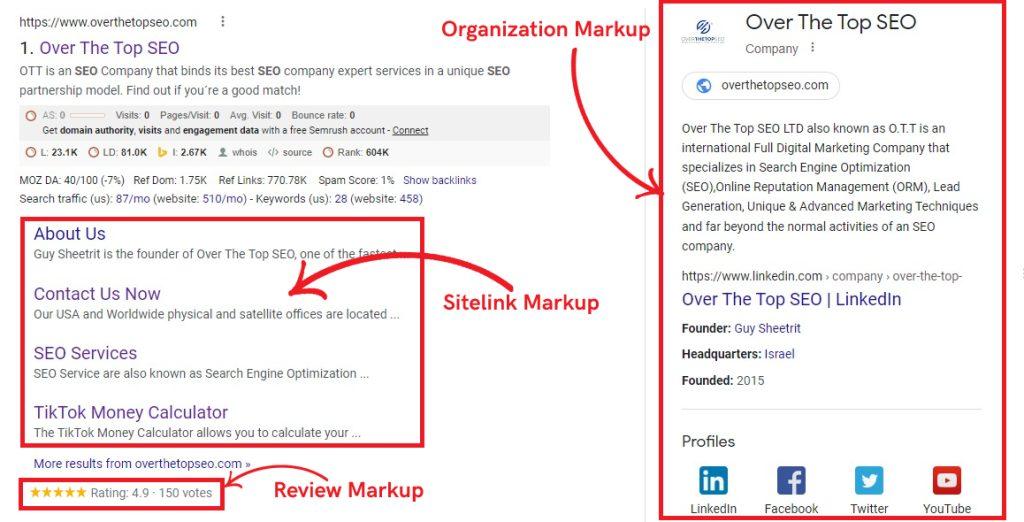
Implementing Schema Markup to Improve Search Visibility
schema markup is a powerful tool in your SEO arsenal, especially for ecommerce websites. By implementing schema, you provide search engines with structured data about your products, services, and overall business. this structured data helps search engines understand your content better, which can lead to enhanced visibility in search results. Imagine your product listings appearing with star ratings, prices, and availability directly in the search results—this is what schema can do for you!
To get started with schema markup, consider the following key points:
- Identify Relevant Schema Types: For an ecommerce site, you should focus on Product, Offer, and Review schema types to highlight essential details about your offerings.
- Use JSON-LD: This format is preferred by Google and is easier to implement without disrupting your existing HTML.
- Test Your Markup: Utilize Google’s Rich Results Test tool to ensure your schema is correctly implemented and eligible for rich results.
Here’s a simple example of how to implement Product schema markup using JSON-LD:
By using this markup, you not only enhance your visibility but also improve click-through rates by providing potential customers with vital details upfront. To keep track of your efforts, consider creating a simple table to monitor keyword performance related to your schema implementation:
| Keyword | Search Volume | Current Ranking | Schema Markup Implemented |
|---|---|---|---|
| Stylish Sneakers | 1500 | 5 | Yes |
| Comfortable Shoes | 900 | 12 | No |
| Best Running Sneakers | 800 | 8 | Yes |
Incorporating schema markup into your ecommerce strategy is not just about improving your search visibility; it’s about enhancing the overall user experience. When customers see rich snippets in search results, they are more likely to click through to your site.As you prioritize this optimization, you’ll not only attract more visitors but also convert them into loyal customers.

Utilizing Internal linking to Enhance user Experience and SEO
When it comes to enhancing both user experience and SEO for your ecommerce site, internal linking plays a pivotal role. By strategically linking to other relevant pages within your website,you not only help users navigate more effectively but also signal to search engines the importance and relevance of your content. This interconnectedness can significantly boost your site’s authority and improve search rankings.
To make the most of internal linking, consider the following best practices:
- Use descriptive Anchor Text: Instead of generic phrases like ‘click here,’ opt for descriptive anchor text that describes the linked page’s content. This not only helps with SEO but also provides clarity to users.
- link to High-Value Pages: Identify your most critically important pages—such as product categories or best-selling items—and ensure they are well linked throughout your site. This directs traffic where it matters most.
- Prioritize User Experience: Always keep the user in mind. Internal links should naturally fit within the content to enhance the reading experience and guide users to related information.
Another effective strategy is to create a site structure that supports internal linking.A well-organized structure not only aids users in finding what they need but also allows search engines to crawl your site more efficiently. Consider implementing a hierarchy,with main categories linking to subcategories and individual product pages. Here’s a simple representation:
| Main Category | Subcategories | Product Pages |
|---|---|---|
| Electronics | Mobile Phones | Latest Smartphones |
| Clothing | Men’s Wear | Summer Collection |
| Home Goods | Kitchen Appliances | Coffee Makers |
don’t overlook the value of linking from high-traffic pages to those that may not get as much visibility. This can help distribute your website’s authority more evenly and bring attention to pages that deserve more traffic. Utilizing analytics tools can definitely help you identify which pages are receiving the most visits, allowing you to optimize your internal linking strategy effectively.
By implementing these internal linking techniques,you can create a seamless user experience that not only keeps visitors on your site longer but also enhances your search engine optimization efforts. Remember, a well-linked site is a user-friendly site!

speeding Up Your ecommerce Site for Higher Conversion rates
In the fast-paced world of ecommerce, every second counts. A delay in loading times can lead to frustrated customers and a significant drop in conversion rates. optimizing your site speed is not just a technical adjustment; it’s a crucial step towards enhancing the user experience and boosting sales.
To start, consider utilizing a content delivery network (CDN). A CDN caches your site’s static content across multiple servers worldwide, ensuring that users can access your site from a server closest to them. This reduces latency and speeds up load times significantly. Additionally, compressing your images can make a huge difference.Images often account for the majority of a page’s weight,and using formats like WebP can reduce file sizes without sacrificing quality.
Another important aspect of site speed is minimizing HTTP requests. Each element on a page—images, scripts, styles—requires a seperate request. By combining files and reducing the number of elements, you can streamline the loading process. Moreover, make sure to enable browser caching, allowing frequently visited pages to load faster for returning customers.
To keep track of your progress, regularly test your website speed using tools like Google PageSpeed Insights or GTmetrix. These platforms provide valuable insights and suggestions tailored to your specific site’s needs. Here’s a quick overview of common optimizations:
| Optimization Technique | Description |
|---|---|
| Image Optimization | Use formats like WebP and compress images to reduce size. |
| Content Delivery Network (CDN) | Distribute content across multiple servers for faster access. |
| Minimize HTTP Requests | Combine files and reduce elements on pages to speed up load times. |
| Browser Caching | Store frequently accessed resources on users’ devices for quick retrieval. |
Implementing these strategies will not only improve your site’s speed but also create a seamless shopping experience for your customers. Remember, a faster site not only retains visitors but also turns them into loyal customers.With every millisecond saved, you’re one step closer to maximizing your ecommerce potential.

Tracking SEO Performance with Analytics Tools for Continuous Improvement
To truly harness the power of SEO for your ecommerce store, it’s essential to leverage analytics tools that provide insights into your website’s performance. monitoring key metrics allows you to identify what’s working and what’s not, enabling you to make informed decisions for continuous improvement.
Start by tracking organic traffic sources. Understanding where your visitors are coming from can highlight the effectiveness of your SEO strategies. Utilize tools like Google Analytics to monitor various traffic channels and identify which keywords are driving the most visits. This insight can definitely help you focus your optimization efforts on high-performing keywords and content.
Another critical metric to consider is the conversion rate. It’s not enough to attract visitors; you need to ensure they are taking the desired actions on your site. By analyzing user behavior through analytics tools, you can uncover patterns that lead to conversions. For example, if a particular product page has high traffic but low conversions, it may need optimization in terms of design, content, or product descriptions.
Don’t forget about bounce rates and session durations. These metrics can shed light on how engaging your content is. High bounce rates may indicate that visitors aren’t finding what they expect, prompting a need for better alignment between your SEO efforts and user intent. Consider implementing A/B testing on landing pages to see what variations can keep visitors engaged longer.
keep an eye on backlinks and domain authority. Tools like Ahrefs or semrush can provide insights into your backlink profile and overall domain health. Tracking these metrics not only helps assess your site’s credibility but also informs your content strategy.Cultivating high-quality backlinks can significantly boost your SEO, so identifying opportunities for guest blogging or partnerships can pay off.
| Metric | Tool | Action |
|---|---|---|
| Organic Traffic | Google analytics | Optimize high-traffic keywords |
| Conversion Rate | Google Analytics | Revamp low-performing pages |
| Bounce Rate | Google Analytics | A/B test landing page elements |
| Backlinks | Ahrefs | Build relationships for link opportunities |
Frequently Asked Questions (FAQ)
Q: What is an Ecommerce SEO checklist, and why is it critically important for my online store?
A: Great question! An Ecommerce SEO checklist is a comprehensive guide that outlines the key strategies and techniques you need to implement to optimize your online store for search engines. It’s crucial as effective SEO can dramatically increase your visibility, drive more organic traffic, and ultimately boost your sales. Think of it as your roadmap to standing out in the crowded online marketplace!
Q: What are some of the key optimizations I should focus on for my online store?
A: There are 16 essential optimizations,but some of the most impactful include optimizing your product titles and descriptions,ensuring mobile-friendliness,and improving site speed. These elements not only enhance user experience but also signal to search engines that your site is trustworthy and relevant.
Q: Why is keyword research so important in Ecommerce SEO?
A: Keywords are the terms potential customers use to search for products. Conducting thorough keyword research helps you identify what your audience is searching for, allowing you to tailor your content accordingly. By incorporating these keywords into your product pages, blog posts, and metadata, you increase your chances of being found in search results. It’s like speaking your customers’ language!
Q: How does site speed affect my Ecommerce SEO?
A: Site speed is critical! If your site takes too long to load, visitors are likely to abandon it and look elsewhere. Search engines like google prioritize fast-loading sites in their rankings, so optimizing your page speed not only improves user experience but can also lead to better search visibility. Remember, every second counts in the fast-paced world of ecommerce!
Q: What role do product images play in SEO?
A: Product images are vital not only for enticing customers but also for SEO. Use high-quality images and remember to optimize them with descriptive file names and alt tags. This helps search engines understand what the images are about,which can improve your ranking in image search results. Plus, great visuals can significantly enhance the shopping experience!
Q: Should I invest in a blog for my online store?
A: Absolutely! A blog can be a powerful tool for driving traffic and improving SEO. By creating valuable content related to your products, you can establish authority in your niche while attracting organic traffic through relevant keywords. Plus, it gives you a chance to engage with your customers and keep them coming back for more!
Q: How often should I update my Ecommerce SEO checklist?
A: SEO is not a one-and-done task—it’s an ongoing process! Regularly reviewing and updating your checklist based on industry trends, algorithm changes, and user behavior is essential. Aim to revisit your strategies at least once a quarter to ensure you’re staying ahead of the competition.
Q: Can I handle Ecommerce SEO on my own, or should I hire a professional?
A: while many small business owners manage their SEO themselves, hiring a professional can offer significant benefits, especially if you’re busy running your store. An expert will bring tailored strategies,keep up with the latest trends,and help you avoid common pitfalls. If you’re serious about growing your online presence, it might be worth the investment!
Q: What is the biggest mistake to avoid in Ecommerce SEO?
A: One of the biggest mistakes is neglecting on-page SEO. This includes optimizing product pages with relevant keywords, meta descriptions, and unique content. Skipping these optimizations can result in poor visibility in search results. Make sure every product page is treated as a valuable part of your overall SEO strategy!
Q: How soon can I expect to see results from my Ecommerce SEO efforts?
A: Patience is key! SEO is a long-term game, and it may take several weeks or even months to see significant results. Though,by consistently implementing the optimizations from your checklist,you’ll be setting yourself up for success. The sooner you start, the sooner you can reap the rewards!
Q: What’s the first step I should take if I want to improve my Ecommerce SEO?
A: Start with a comprehensive SEO audit of your online store. Identify what’s working,what needs improvement,and where there are opportunities. From there, you can prioritize your checklist items and begin implementing changes. Remember, every little optimization counts toward your bigger success!
By following this checklist and actively engaging with SEO practices, you’ll be well on your way to elevating your online store’s visibility and sales. Happy optimizing!
Key Takeaways
As we wrap up our deep dive into the essential Ecommerce SEO checklist,it’s clear that optimizing your online store is not just beneficial—it’s crucial for your success. With these 16 key strategies in your toolkit,you’re not just setting yourself up to be found by search engines; you’re creating a better experience for your customers.Remember, every little optimization counts. from fine-tuning your product descriptions to enhancing your site’s speed, each step you take will help you climb the search rankings and ultimately drive more traffic and sales. Implementing these strategies may take time and effort, but the payoff is well worth it.
So, why wait? Start making these changes today and watch your online store transform. If you have any questions or need further guidance on any of the tips we covered,feel free to reach out. Your journey to Ecommerce success starts now—let’s make it happen! happy optimizing!



